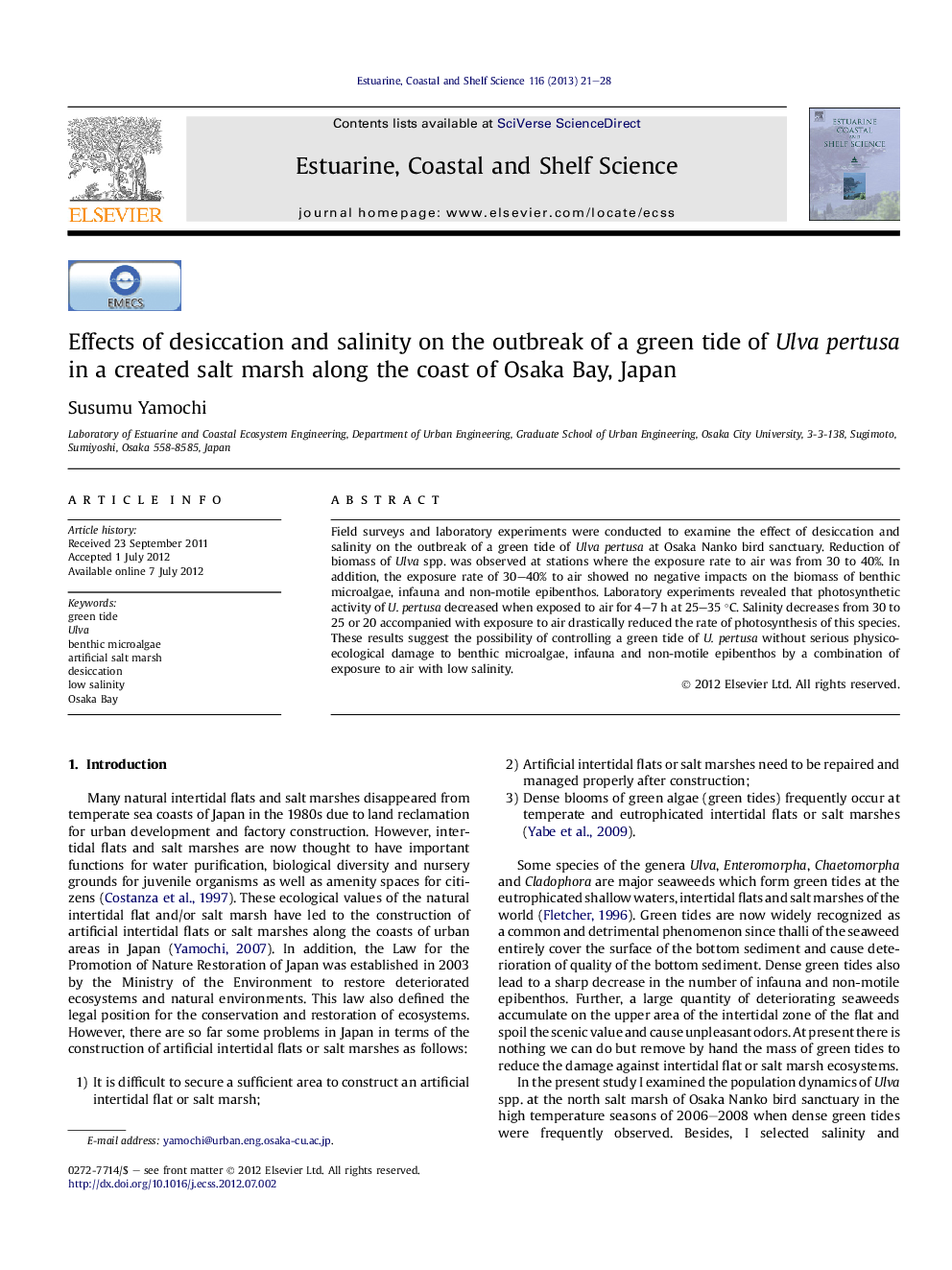| Article ID | Journal | Published Year | Pages | File Type |
|---|---|---|---|---|
| 6385123 | Estuarine, Coastal and Shelf Science | 2013 | 8 Pages |
Abstract
Field surveys and laboratory experiments were conducted to examine the effect of desiccation and salinity on the outbreak of a green tide of Ulva pertusa at Osaka Nanko bird sanctuary. Reduction of biomass of Ulva spp. was observed at stations where the exposure rate to air was from 30 to 40%. In addition, the exposure rate of 30-40% to air showed no negative impacts on the biomass of benthic microalgae, infauna and non-motile epibenthos. Laboratory experiments revealed that photosynthetic activity of U. pertusa decreased when exposed to air for 4-7 h at 25-35 °C. Salinity decreases from 30 to 25 or 20 accompanied with exposure to air drastically reduced the rate of photosynthesis of this species. These results suggest the possibility of controlling a green tide of U. pertusa without serious physico-ecological damage to benthic microalgae, infauna and non-motile epibenthos by a combination of exposure to air with low salinity.
Related Topics
Physical Sciences and Engineering
Earth and Planetary Sciences
Geology
Authors
Susumu Yamochi,
